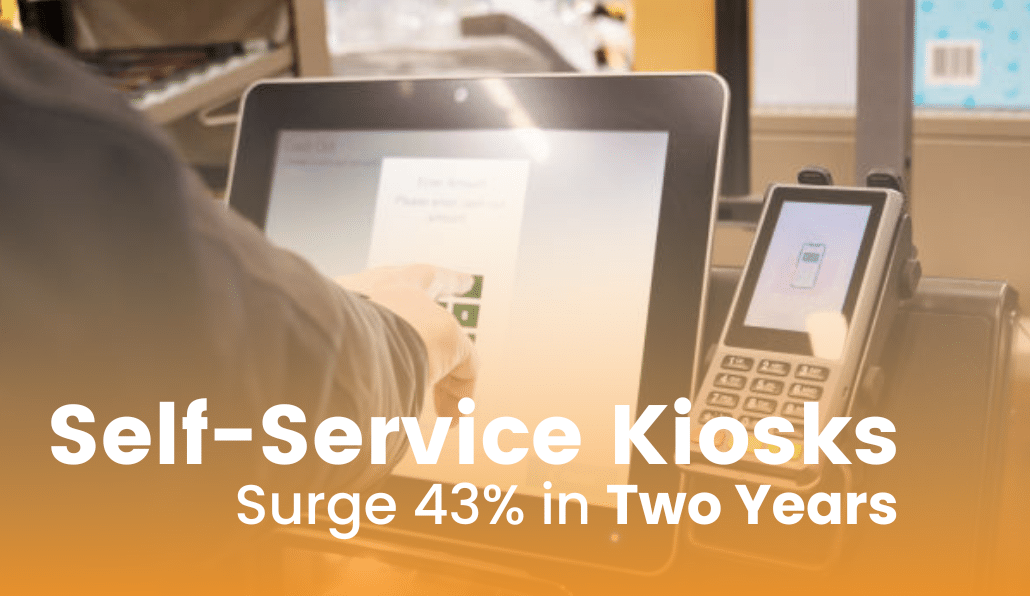Self-service kiosks are no longer just a convenience — they’re a growth engine for quick-service restaurants (QSRs). Over the past two years, adoption has surged 43% globally, and QSR operators are leveraging kiosks to increase speed, boost average order size, and navigate staffing challenges.
Here’s the latest data and what it means for your restaurant:
Self-Service Restaurants Gain Momentum in QSRs
Chart 1: Data from 2022 to 2024 shows that kiosks consistently drive higher revenue per customer, reinforcing their role as a growth lever.
Kiosks are transforming the way QSRs operate. Here’s how:
- Nearly 350,000 kiosks were installed in restaurants worldwide by mid-2023, up 43% from 2021 (Deliverect, 2023).
- 65% of QSR customers say that they would visit more often if kiosks were available (Gem Journal Today, 2024).
- Average ticket sizes at kiosks are 8-15% higher than traditional counter orders (Investopedia, 2024).
Why it matters: These numbers show that kiosks are no longer a “nice-to-have” — they’re a revenue-driving necessity.
Why QSR Operators Are Doubling Down
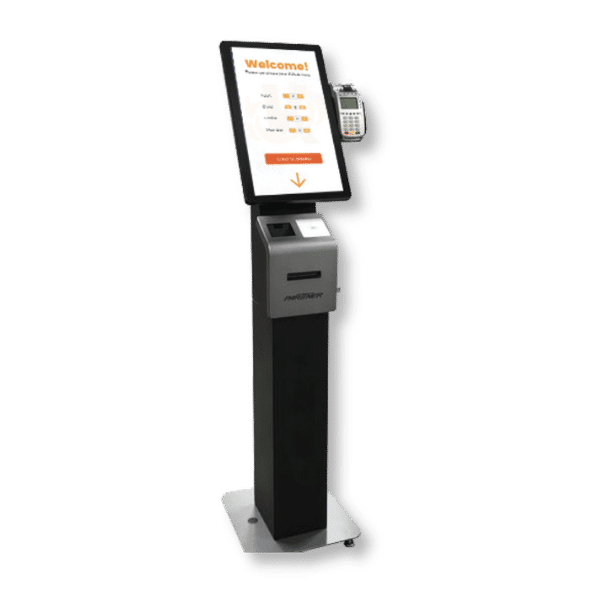
The move toward kiosks is driven by two key pressures: labor challenges and customer expectations. Rising wages and staffing challenges are top concerns for QSRs. Kiosks reduce reliance on cashiers, allowing staff to focus on food prep, hospitality, and customer service.
At the same time, customers are seeking speed, convenience, and autonomy. Restaurants implementing kiosks report order processing times dropping by up to 40%, with queues shrinking 25-40% (Lavu, 2025).
Kiosks also make upselling easier: digital menus and POS marketing prompt customers to add items, boosting average ticket size by 25%, with 20% of customers opting for extras (US Chamber, 2024).
Data-Driven Benefits of Kiosks
Chart 2: Global self-service kiosk adoption has steadily increased from 2021 to 2025 and is expected to keep growing.
The data shows clear operational and financial advantages. Not only do kiosks reduce wait times and queues, but they also increase customer spend and loyalty. Here’s a quick summary of benefits:
- Order processing is 40% faster, reducing bottlenecks
- Average ticket size grows 8-15%, depending on menu type
- Upsell conversions improve by 20%, as customers respond to digital prompts
- Customers are 65% more likely to return to a location with kiosks
PRO TIP!
Integrating kiosks with KORONA POS ensures that inventory is updated in real time, promotions are optimized, and operators gain a complete view of performance. This allows restaurants to react quickly to trends and ensure consistent service quality.
Kiosk Technology Trends to Watch
While kiosks are already widely adopted, the technology is evolving rapidly. Operators should pay attention to:
- AI-Powered Recommendations: Personalized upsell suggestions based on past orders or menu popularity.
- Voice-Activated Ordering: Hands-free interfaces that enhance accessibility and speed.
- Contactless Payments & Mobile Integration: Customers can start an order on a mobile app and finish at a kiosk for faster pickup.
- Multilingual & Accessibility Features: Expanding reach to diverse customer bases.
These trends enhance the customer experience without changing the long-term trajectory of kiosks as a central component of QSR operations.
⚠️ Regulatory Watch
While kiosks offer many benefits, operators should monitor state-level regulatory changes. California’s SB 422 proposes limits on items per self-checkout order and staffing requirements. Rhode Island’s SB 2268 will cap the number of kiosks per store and mandate at least one attended lane.
With a fully integrated point of sale like KORONA POS, operators can stay compliant while maintaining speed and convenience, ensuring both efficiency and adherence to regulations.
ROI and Financial Impacts of Kiosks
Understanding the financial upside is critical for operators considering kiosk investment. Let’s imagine a mid-sized QSR:
- Average ticket: $10
- Daily transactions: 500
- Current revenue: $5,000/day
- With kiosk adoption, average ticket increases 12%, and order processing efficiency allows for 15% more daily transactions.
CALCULATION:
- Increased ticket size: $10 × 1.12 = $11.20
- Increased orders: 500 × 1.15 = 575
- New daily revenue: 575 × $11.20 = $6,440
Impact:
An additional $1,440/day, or $525,600/year, assuming 365 operating days. Even after a $50,000–$100,000 kiosk implementation, the ROI can occur within 3–6 months.
💰 Other financial benefits include:
- Labor cost reduction as fewer staff are needed at checkout
- Reduced order errors, saving on food waste
- Data-driven menu optimization, increasing profitable upsells
How KORONA POS Powers Kiosk Success
Kiosks are only as effective as the POS system behind them. KORONA POS helps operators maximize kiosk benefits by connecting every order, menu item, and promotion:
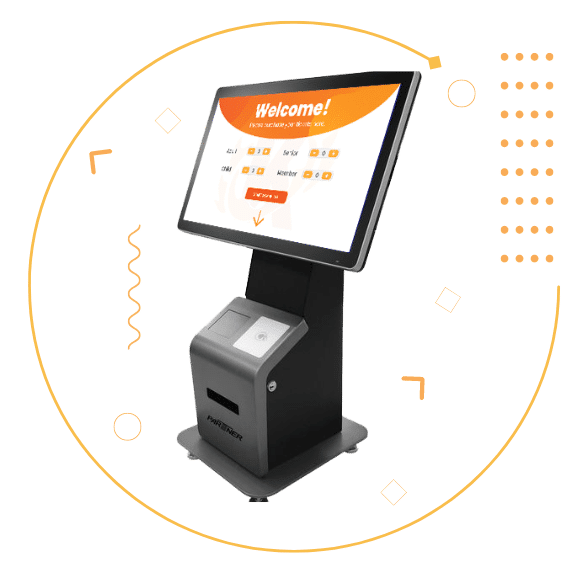
- Real-time inventory syncing prevents stockouts and ensures that orders flow without disruption.
- Analytics dashboard track upsell success, popular menu items, and peak traffic times.
- Flexible promotions allow automatic add-ons, limited-time offers, and combo deals.
- Staff optimization tools help restaurants shift employees from checkout to service and operations roles.
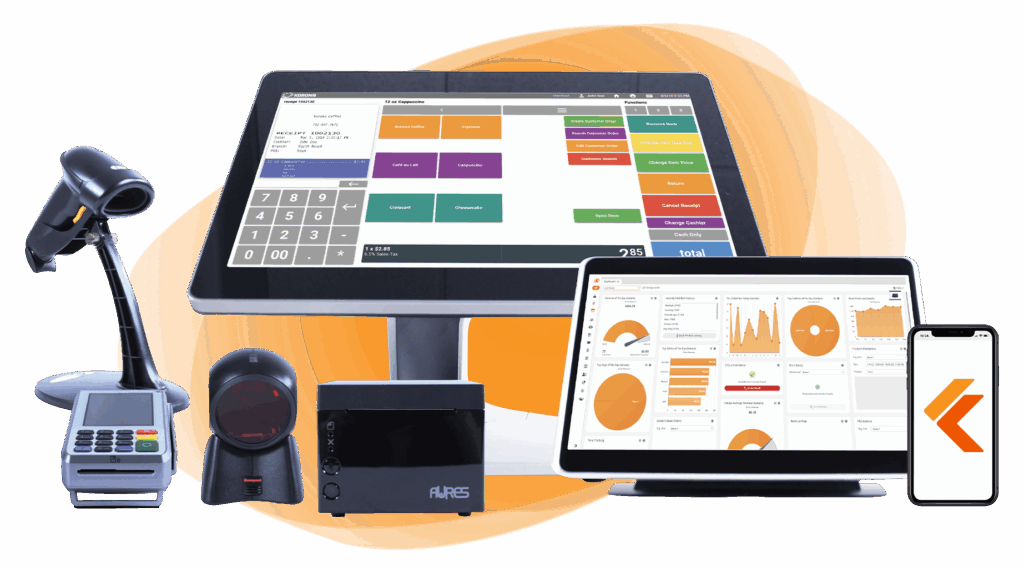
Build Your Own POS
Whether you run a retail store, café, or admissions booth, we have the point of sale hardware designed for your specific needs. Start building your ideal POS system now.
Modernize your QSR with KORONA POS
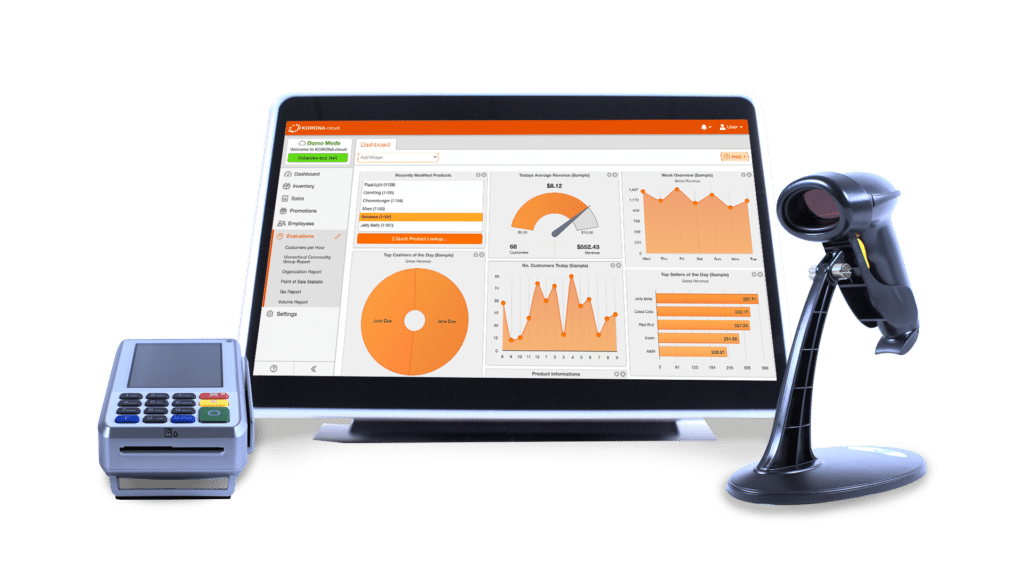
By now, self-service kiosks are a key driver of revenue, efficiency, and customer satisfaction in QSRs. Operators who embrace this trend now can improve throughput, increase average ticket size, and free up staff to focus on hospitality.
With KORONA POS powering inventory, analytics, and customer loyalty, your business can harness the full potential of kiosk technology while staying compliant, agile, and profitable. If you’re ready to modernize your QSR with kiosks, explore how KORONA POS can take your customer experience — and profits — to the next level.


